
YOU CAN ALSO READ:
THE GENUS TYLECODON
Tylecodon are found within the crassulacea family. The genus of
around 46 species, is very diverse in habitat and quite variable in form, ranging from dwarf single leaved to large thick-stemmed, wich
can attain a height of 2,5 mts.
The distribution of Tylecodon is , restricted to the Northern, Western and Eastern Cape provinces of South Africa and Sourhern Namibia.
The most typical vegetation type in which Tylecodon species are found is Succulent Karoo. The plants occur quite abundantly in
habitats that vary from the rocky coastal shores ; rock crevices in mountainous terrain and
in sandy hilly terrain.
In very hot, dry environements, plants are usually confined to the cooler south facing slopes.
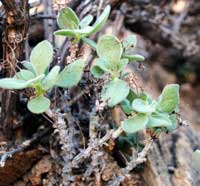


tylecodon bayeri
tylecodon racemosus flower
tylecodon sp
Tylecodon exhibit great variation in adaptive strategies for coping with a dry environement. In succulent plants, water is stored in fleshy roots, stems or leaves. Some species occurs on sheer precipices, well out of reach of game and browsing stock. There are a few geophytic species of Tylecodon that protect themselves from desiccation in the dry season hidden unerground, and also protecting the from hervivores.

tylecodon bodleyae
Apart from their water storage ability, Tylecodon species are also adapted to avoid animal predation being poisonous, with cardiotoxic and cumulatively neurotoxic Bufadienolides, and must be kept away from animals. Krimpsiekte (' shrinking disease,' cotyledonosis) is an economically important disease of livestock caused by consumption of Tylecodons, Cotyledons and related plants. Some Tylecodons are grubbed out by South African farmers to protect livestock and are therefore endangered in their habitat.
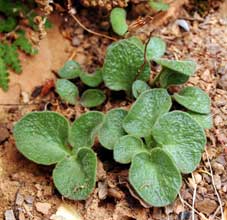
tylecodon sp
Their deciduous succulent leaves arranged in a spiral manner, are produced during the winter. As this is the growing season, the plants require careful watering during the winter until the Spring when water should be withdrawn. Flowers are produced after the leaves have dried and fallen, during the dry summer months, though in cultivation the leaves may persist for longer if the plants are watered.

tylecodon hirtifolia flower
Seeds, are very small, light-weight and wind-dispersed. The seed is very fine and light
brown in colour. The seed takes about 4 months to mature. The easiest way
of harvesting seed is to cut the branched fruiting bodies in late March (autumn in the southern the hemisphere). Allow the
capsules to open in a closed paper bag. This will ensure the seed is not lost through wind or other means.
Tylecodon are not difficult plants to grow and are realatively free of diseases and pests. They can easily be cultivated outdoors in warm
to temperate, winter rainfall regions where frost are not severe. The dwarf species,
however, are better cultivated indoors, containerised and kept in a greenhouse where water and
temperatures can be controlled. Plants are best cultivated in a well-drained, sandy, mineral-rich soil. Water them
sparingly in winter and less to almost nothing in summer.
Propagation is easy and can be done from seed, steem cuttings or division.



tylecodon reticulatus
tylecodon paniculatus
tylecodon wallichi x paniculatus
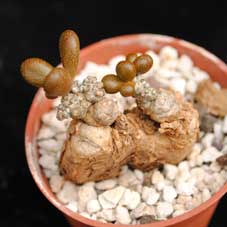
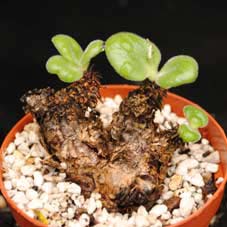
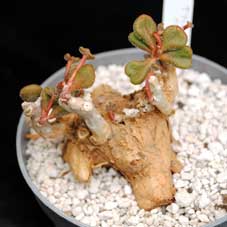
tylecodon sulphureus
tylecodon ellephiae
tylecodon pygmaeus
Sow the seed in a seed box. DO NOT cover the seeds. Simply sow the seeds in a coarse sand topping, with a well-drained substrate underneath. Water with a fine mister or a fogger once a week during winter and once a month in summer. The seeds will germinate readily during the cooler period of the year. After about two years, the young plants will be about 2 - 3 cm in height and can be pricked out and planted in bags. Always ensure that plants are grown in a well-drained medium. To grow from cuttings , the best time for taking cuttings is autumn. Select cutting material at least 3 cm in diameter, dust with sulphur, kept for about two weks to callus, and then place cuttings in clean sand and use bottom heat if the winters are very cold. Keep cuttings moist until well rooted, cuttings usually take about one year to form a strong root system, when these cuttings can be transplanted into permanent containers, in well-drained soil.


